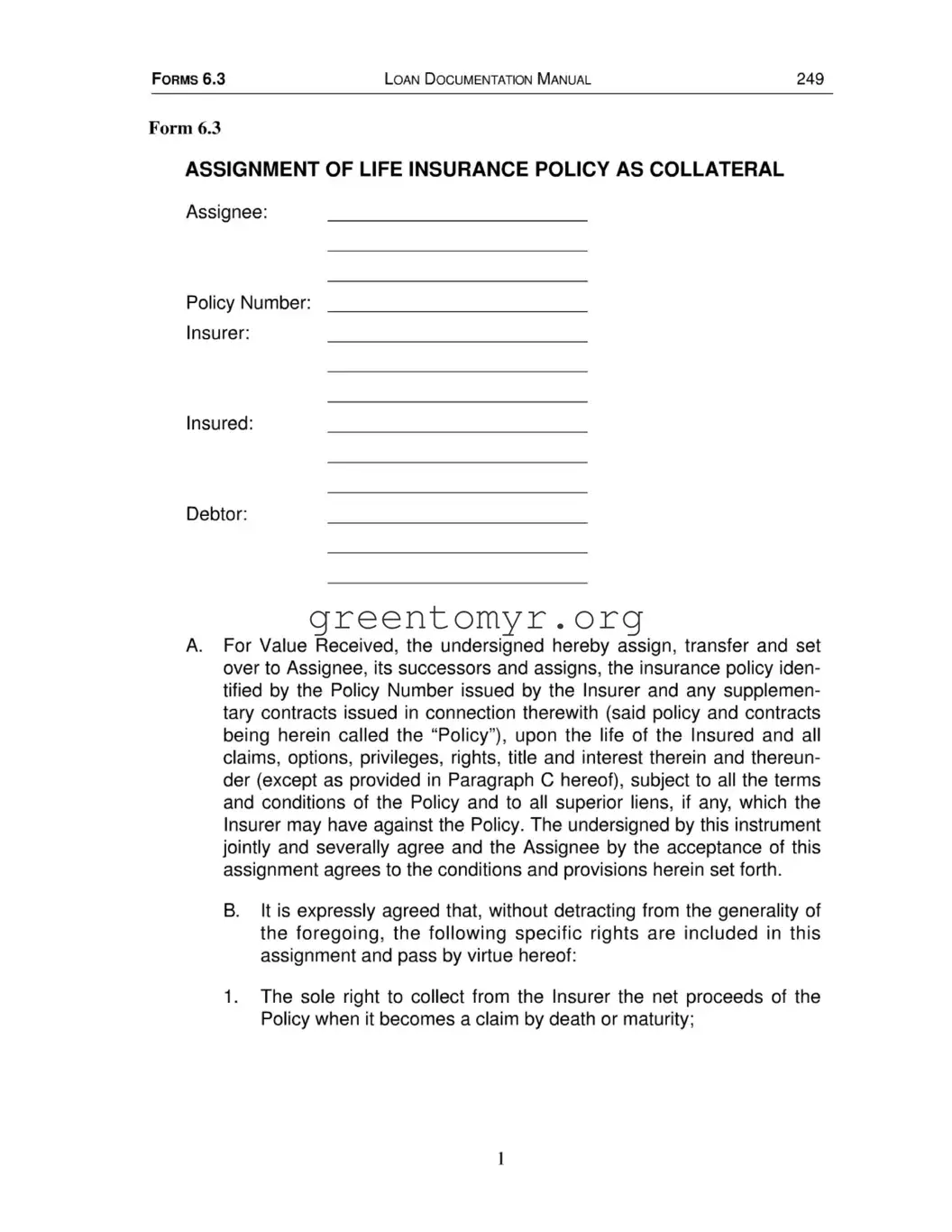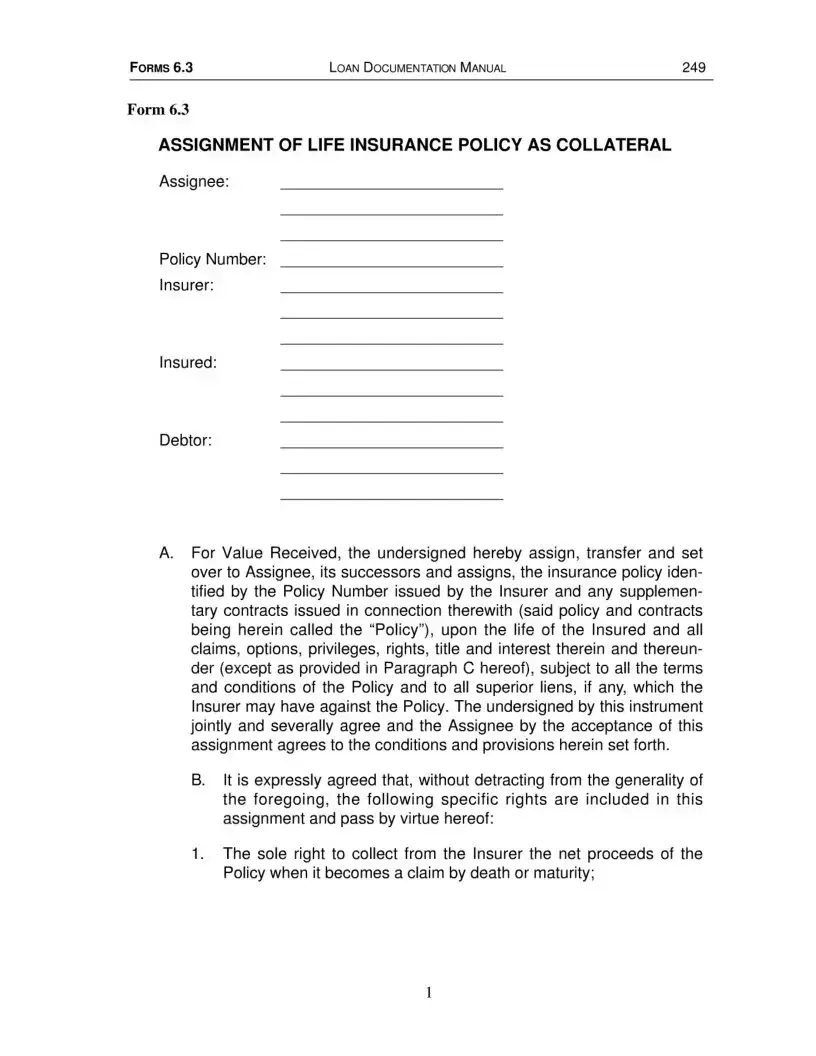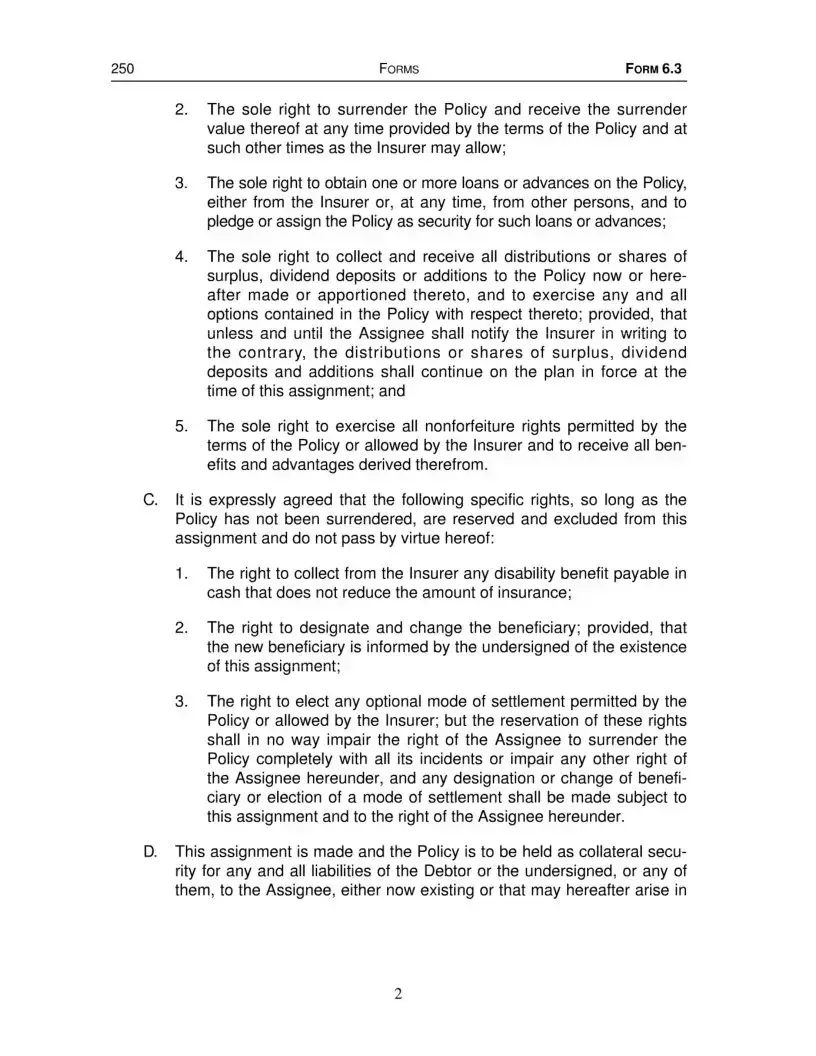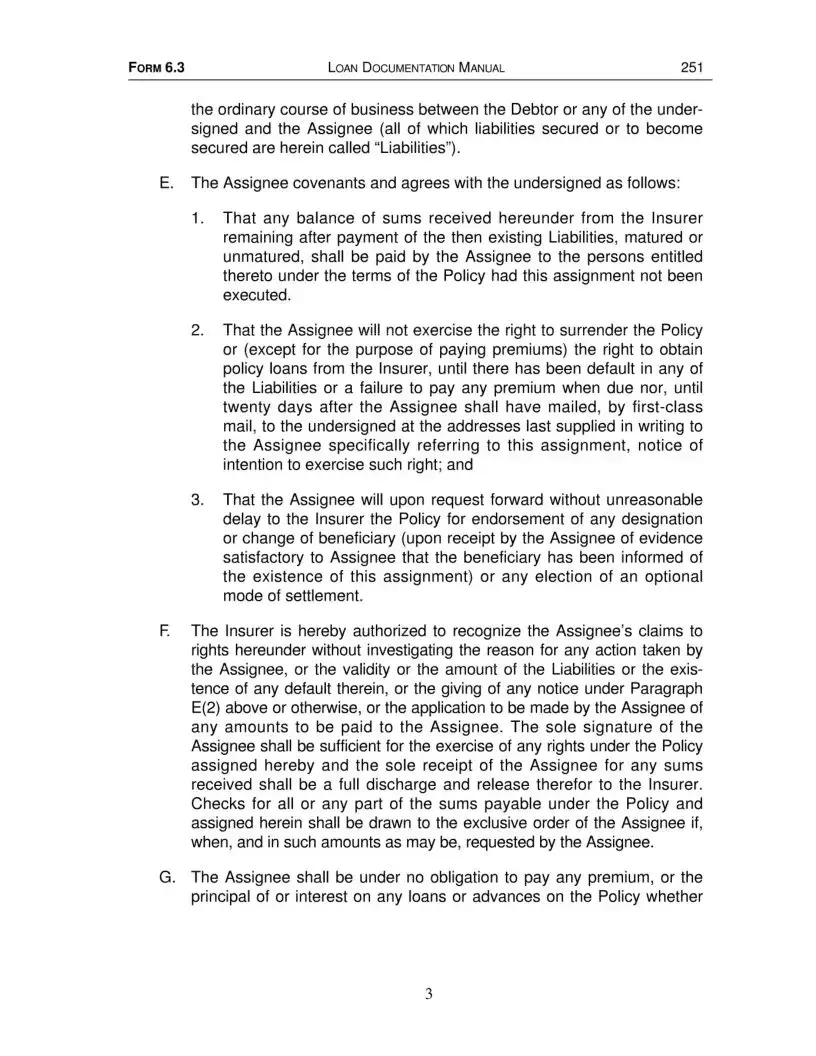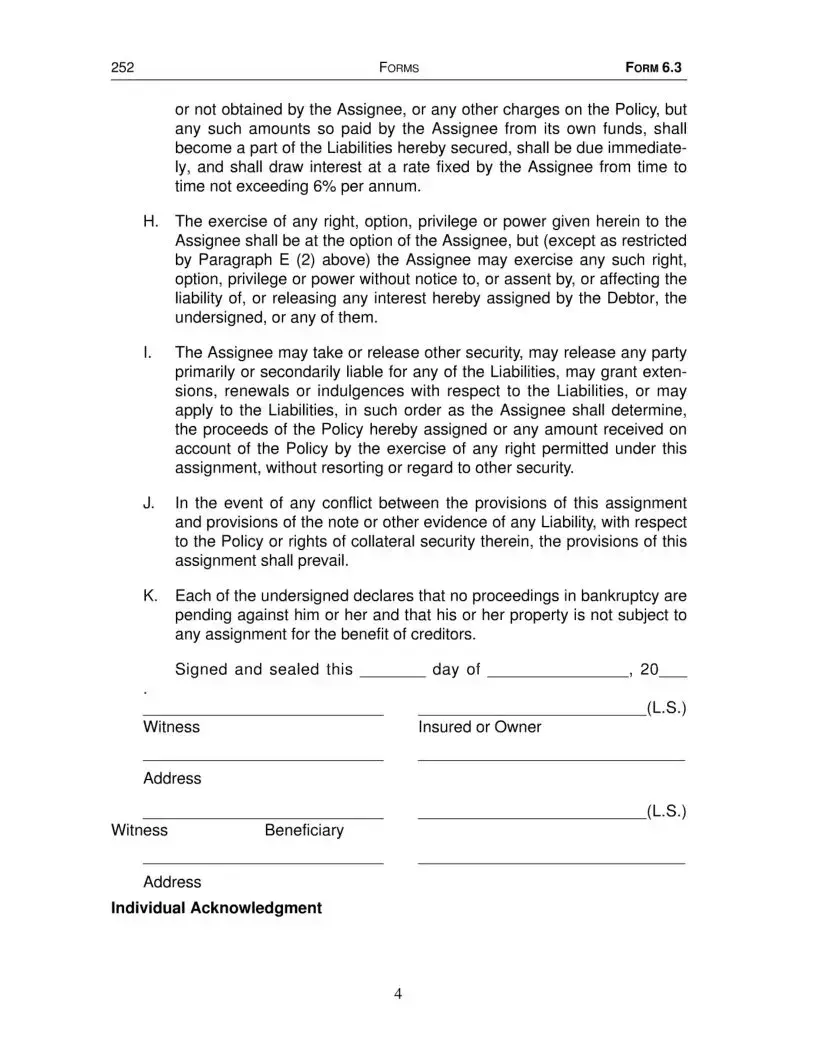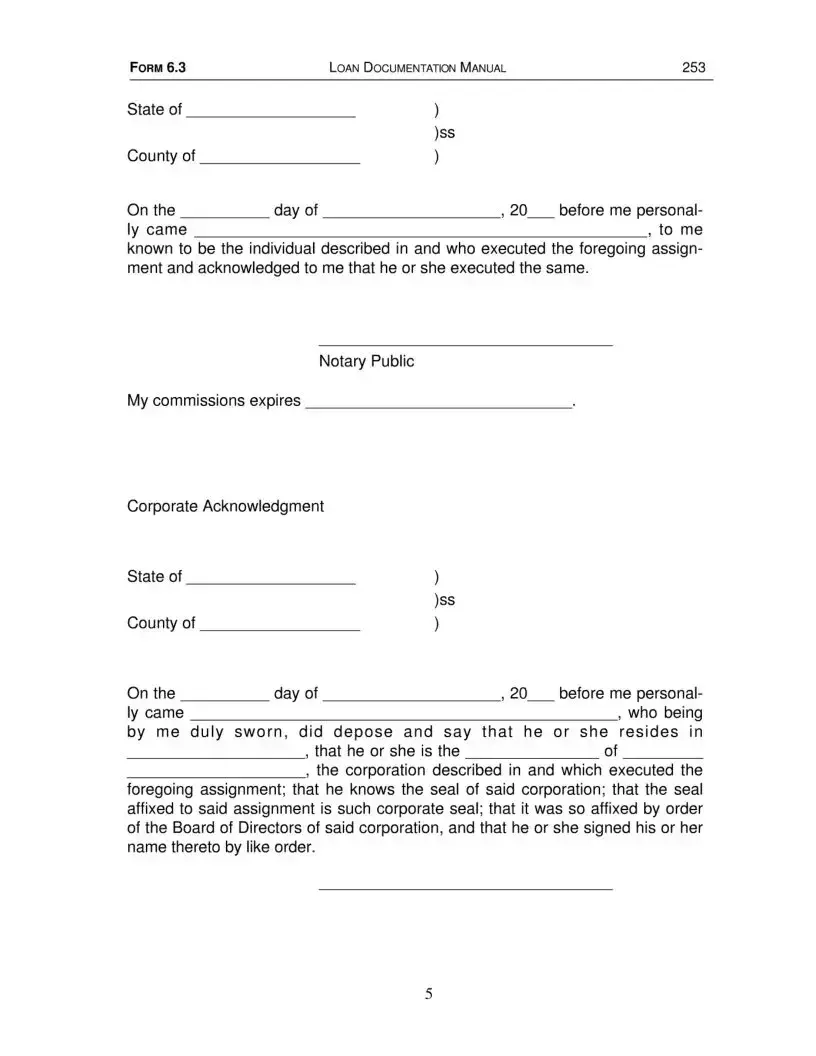2.The sole right to surrender the Policy and receive the surrender value thereof at any time provided by the terms of the Policy and at such other times as the Insurer may allow;
3.The sole right to obtain one or more loans or advances on the Policy, either from the Insurer or, at any time, from other persons, and to pledge or assign the Policy as security for such loans or advances;
4.The sole right to collect and receive all distributions or shares of surplus, dividend deposits or additions to the Policy now or here after made or apportioned thereto, and to exercise any and all options contained in the Policy with respect thereto; provided, that unless and until the Assignee shall notify the Insurer in writing to the contrary, the distributions or shares of surplus, dividend deposits and additions shall continue on the plan in force at the time of this assignment; and
5.The sole right to exercise all nonforfeiture rights permitted by the terms of the Policy or allowed by the Insurer and to receive all ben efits and advantages derived therefrom.
C.It is expressly agreed that the following specific rights, so long as the Policy has not been surrendered, are reserved and excluded from this assignment and do not pass by virtue hereof:
1.The right to collect from the Insurer any disability benefit payable in cash that does not reduce the amount of insurance;
2.The right to designate and change the beneficiary; provided, that the new beneficiary is informed by the undersigned of the existence of this assignment;
3.The right to elect any optional mode of settlement permitted by the Policy or allowed by the Insurer; but the reservation of these rights shall in no way impair the right of the Assignee to surrender the Policy completely with all its incidents or impair any other right of the Assignee hereunder, and any designation or change of benefi ciary or election of a mode of settlement shall be made subject to this assignment and to the right of the Assignee hereunder.
D.This assignment is made and the Policy is to be held as collateral secu rity for any and all liabilities of the Debtor or the undersigned, or any of them, to the Assignee, either now existing or that may hereafter arise in
